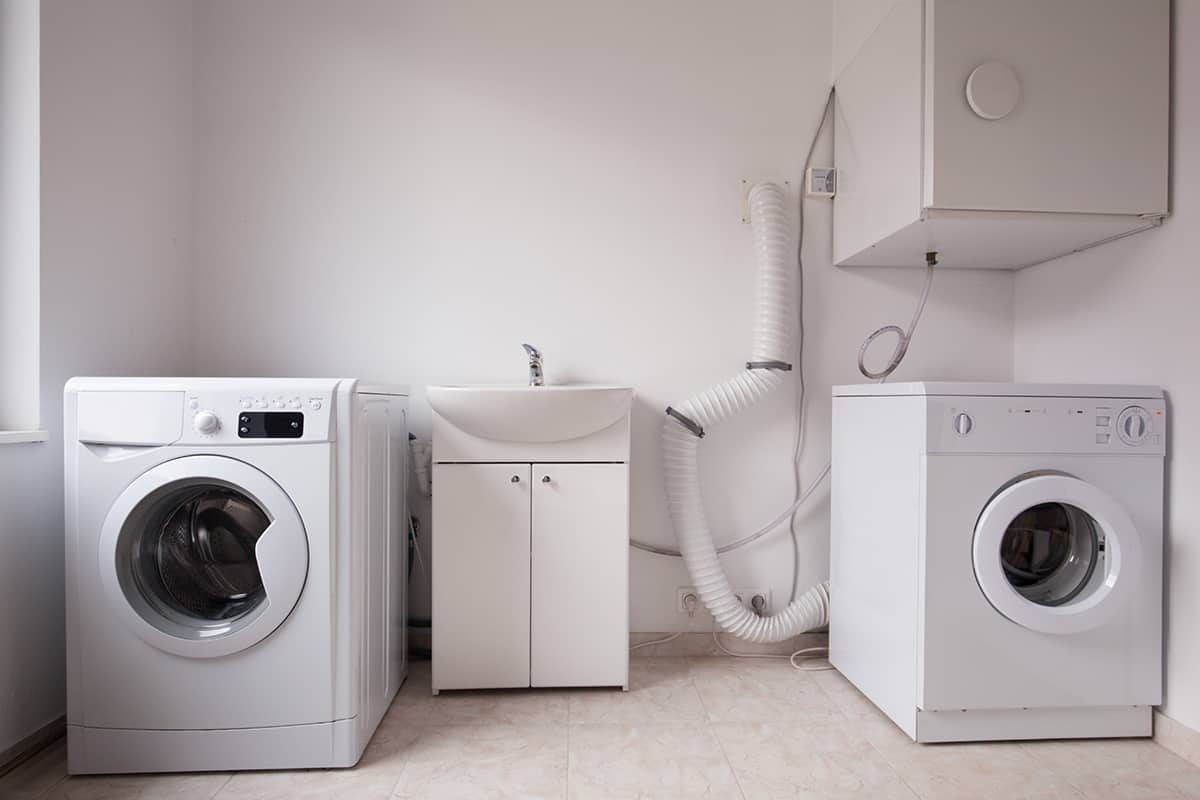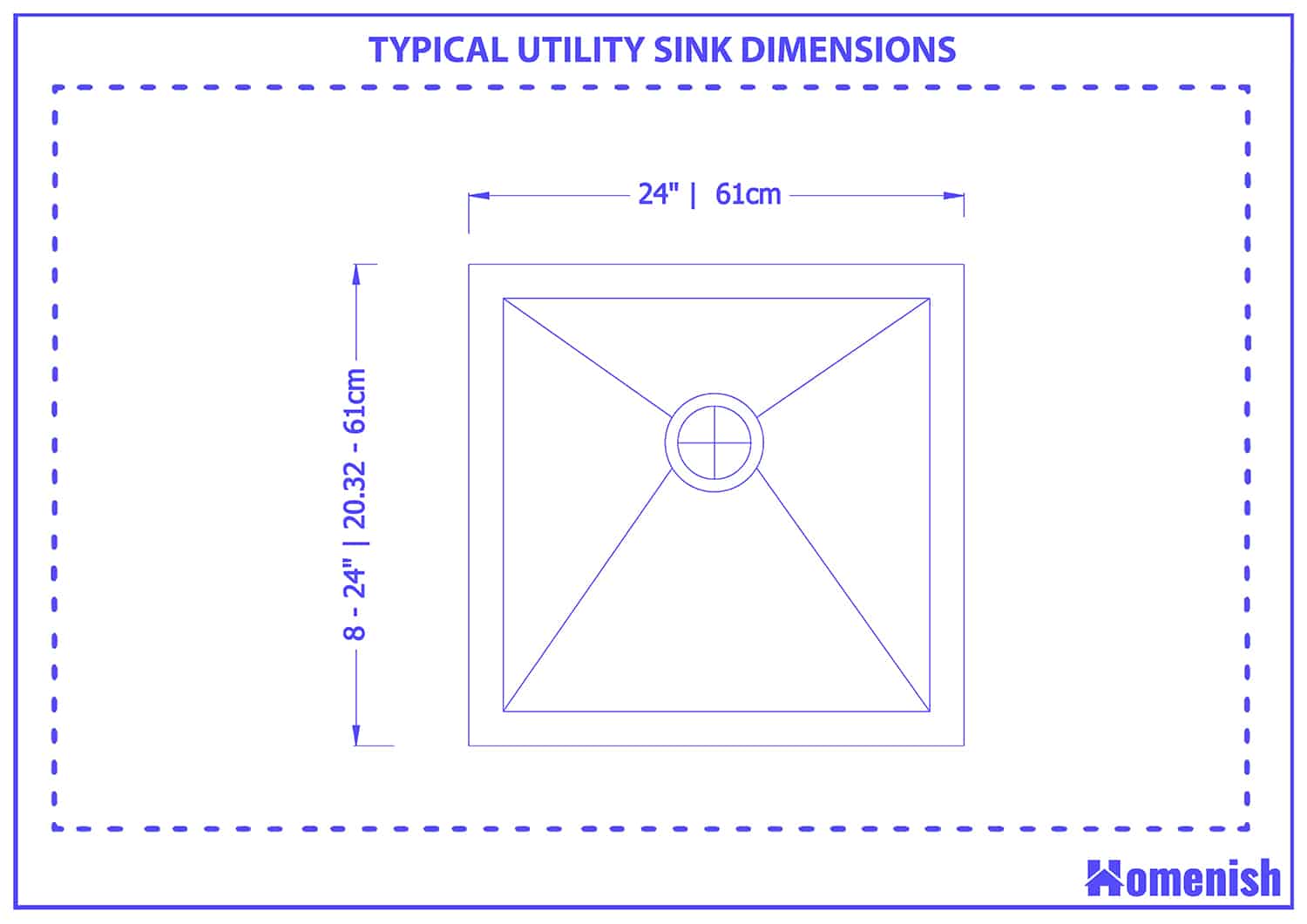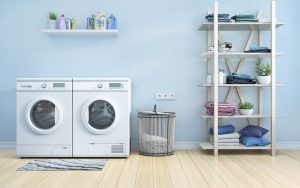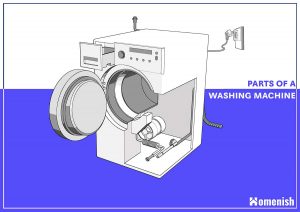Utility sinks or laundry room sinks are an excellent addition to a home that can really boost functionality. These sinks tend to be less showy than kitchen or bathroom sinks since they are primarily designed for performance over style.
Utility sinks are usually deeper than other types of sinks to accommodate the different types of uses, with a depth range of 8 inches to 24 inches. Here we explore how utility sinks are used and their standard sizes.
Utility Sink Sizes
The size of the sink you should have in your utility will depend on a number of things. First of all, the size you have to work with will largely dictate the size of the sink you can get in terms of width and depth.
Your sink will need to fit into the utility or laundry room space while also allowing enough space for appliances such as a washer and dryer, along with cabinets, to provide you with storage space. The depth of the sink can be more customized to your intended uses; it will just mean sacrificing the height of the cabinet beneath it if you want a deep sink.
The typical depth of a utility sink or laundry room sink is around 9 to 10 inches. These types of sinks tend to be deeper than kitchen or bathroom sinks in order to suit the typical needs of a utility or laundry room.
The minimum depth of a utility sink is around 6 inches, and they can go to a depth of 24 inches. In terms of width, utility sink sizes are quite variable. They tend to come in square or rectangular shapes, and they lack a draining area since they aren’t commonly used for washing dishes. A good size for a utility sink is 24 inches in width.
Utility Sink Uses
Having a utility sink adds a great deal of functionality to a utility or laundry room. These sinks are generally not designed as a stylish feature but instead favor practicality over aesthetics.
When selecting a sink for the utility or laundry room, first think about what you will predominantly use it for because this will largely dictate the type of sink you need and the size of sink you need. Common uses for the sink in a utility room or laundry room include:
Hand washing laundry
Even if your washing machine has settings for silks, wool, and delicates, there are still some items of clothing that are just too precious or fragile to put in with the regular wash. If you’re keen to avoid shrinkage or damage to your clothing, then pay attention when an item label reads ‘hand-wash only’.
Having a sink that is big enough to soak and hand wash clothing in is really useful for most families, as all of us typically have at least one hand-wash item in our wardrobe that will need to be handled with care. To successfully handwash, you’ll need a deep sink that you can fill with water, which will allow the clothing to be submerged. If you intend on handwashing items of laundry in your utility sink, then a depth of around 12 inches is ideal.
Pre-treating stains
Even if you’re not a fan of clothing that needs to be hand-washed, there are always instances where regular laundry will need to be treated for stains before it goes into the washing machine. Grass stains, wine stains, grease stains, and ketchup stains are just some of examples of stains that should be pretreated before they go in the washing machine to give them the best chance of being removed and coming out clean.
A laundry room sink or utility sink is an ideal place for pretreating stains because it ensures that your kitchen or bathroom sink is kept free for other tasks, such as washing hands or washing dishes. A deep sink is not a requirement for pretreating stained clothing, so compact sinks will work well for this use.
Washing muddy boots
In many homes, the utility is situated by the back door. This makes it a convenient place to get back into the house following a muddy dog walk or after doing some gardening because you can remove your dirty shoes in the utility and not trail any of the mud into the main areas of the home.
The muddy footwear can then be rinsed in the utility sink, ready to be worn again. If you’re fond of walks in the countryside, where you have a tendency to get a bit mucky, then a sink that will accommodate your shoes or boots is a must-have. You can base your sink around the size of the largest pair of feet in your home, and be sure to get a rinser tap to make the process of cleaning shoes less messy.
Cleaning DIY items
If you are renovating your home or updating your interior decor, then a dedicated space for washing out roller trays and cleaning paintbrushes will be a huge help. These are the kinds of items you won’t wash in your kitchen in case the paint splatters and winds up getting into places you don’t want it, whereas a utility sink is less about looking pristine and more about being functional.
Rinse vegetables
Lots of people use the utility sink to wash vegetables from the garden, to keep mud, dirt, or creepy crawlies out of their kitchen where food is prepared or eaten. In order to wash your garden vegetables in the utility sink, it should be able to fit a large colander in it. Deeper sinks are best for this purpose, but you can get away with sinks as shallow as 8 inches.
Fill mop buckets
If your kitchen sink isn’t big enough to accommodate a large mop bucket, then having a big utility or laundry sink will be a great help. Mop buckets need to be generously filled with hot water in order to clean hard floors successfully, so be sure to choose a deep sink to fulfill this need.
Also, take into account where the tap is located so that it doesn’t get in the way of putting your bucket in and out of the sink.









